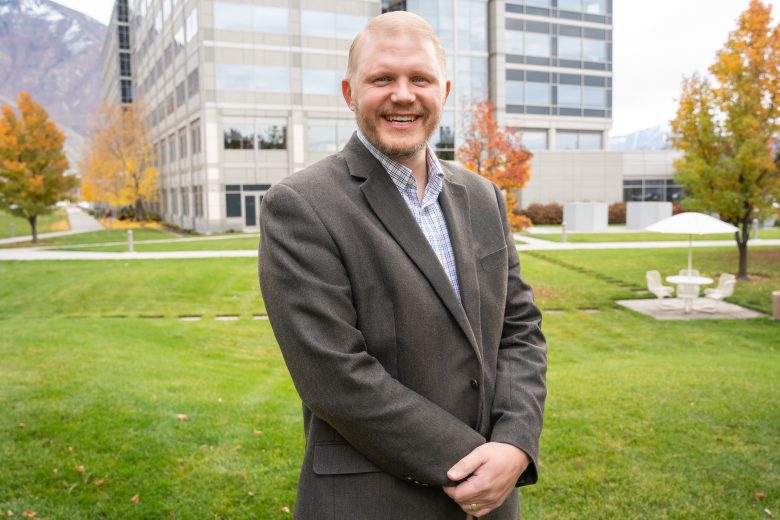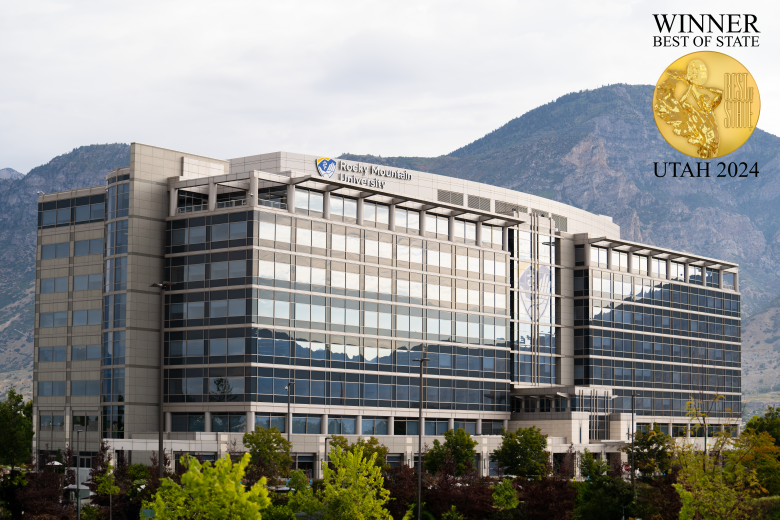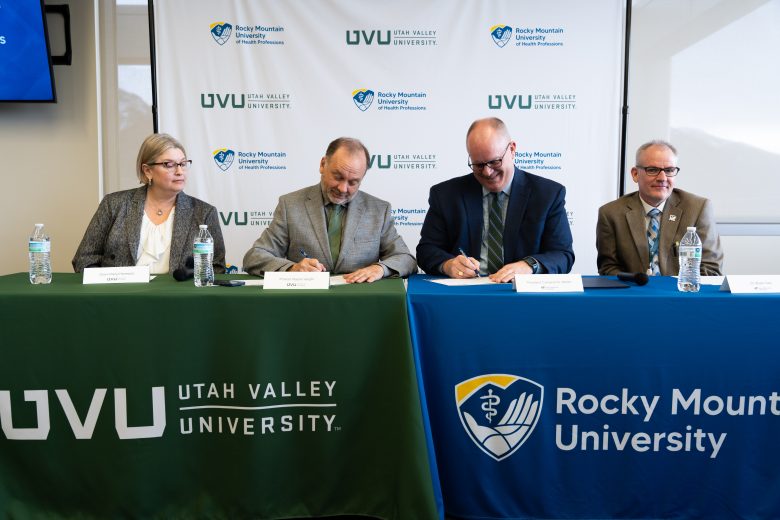While the US is often seen as the land of opportunity, for those who come from outside the mainland US to work in healthcare, the transition process can be filled with many barriers. Hina Garg, PT, PhD, NCS, and Roberto López-Rosado, DPT, MSPT, MA, have successfully navigated into healthcare careers in the US, but not without challenges. And now they’re using their experiences to advocate for others and diversity within healthcare.
Garg was born and raised in Delhi, India, in a family that placed a high value on education. “It was never a question for me to be able to achieve what I wanted. I was encouraged to pursue anything and everything,” said Garg.
That support and commitment to excellence led her to Guru Gobind Singh Indraprastha University, where she earned a Bachelor of Physiotherapy (known as physical therapy (PT) in the US), and graduated second in her university, of five colleges and 300 PT students.
After working as a physiotherapist in India, Garg decided that she wanted to gain international experience, so in 2008, she enrolled in a master’s program in kinesiology at Texas A&M University.
Her family’s support, a strong emphasis on higher education, and her prior healthcare experience gave her the confidence she needed to move to the US, but she was met with almost impossible barriers.
When she arrived in Texas and started her graduate program, Garg wanted to continue working as a PT. So she started the process for PT licensure in the US. She quickly realized the complicated nature of the process. Seemingly impossible, the process took over a year and a half.
For Garg the entire licensure process was arduous and frustrating. “Having come from being a practicing clinician with a good education in India to being told all of that didn’t count was a difficult and humbling experience for me,” said Garg.
“I personally know people who were told that they were ineligible and had to repeat their degrees in the US. I know people who moved here and switched careers because the licensure process wasn’t worth their time. I have seen foreign-educated PTs who come to the US, spend time, money, and effort on their education, and leave to go back from the frustration and despair due to the poor knowledge and guidance on licensure and work visa requirements,” said Garg.
“There are few healthcare professionals and institutions who understand these requirements, as it is very different compared to non-healthcare fields. That makes it an extremely challenging process,” said Garg.
“Somehow, I managed to overcome those barriers. I think I was determined to prove myself…I had to find a lot of it out on my own,” said Garg.
Despite the challenges and barriers, Garg finished the process and passed the PT licensure exam in the US. As she was working on her master’s, Garg developed a deep interest in research and decided to pursue a PhD in Rehabilitation Science at the University of Utah. Her education and experience ultimately brought her to Rocky Mountain University of Health Professions (RMUoHP) in Provo, Utah, where she teaches in the Doctor of Physical Therapy program and directs the outpatient Multiple Sclerosis and COVID-19 rehabilitation programs at the university’s pro-bono clinic, the Community Rehabilitation Center.
Garg’s experiences, while personal and challenging, are not unique to just her. Many healthcare professionals who come to the US are met with barriers and setbacks.
Roberto López-Rosado, who was born and raised in Puerto Rico, also had to overcome many barriers in coming to the US to work.
López-Rosado earned a degree in biology at the University of Puerto Rico before entering medical school. After two years in medical school, he realized his passion was in anatomy, so he transferred to the Universidad Central del Caribe where he earned his master’s in anatomy. After graduating with his master’s, López-Rosado began teaching at a private medical school, where he began to develop his teaching skills.
In 2001, he decided to move to the mainland US. He moved to New York City, two weeks before the catastrophic events of September 11. The confusion and overwhelming tragedy that accompanied that period of time prompted his move to Florida where he accepted a job at Florida Gulf Coast University (FGCU).
Even though Puerto Rico is a US territory and López-Rosado was born a citizen of the US, Spanish was his native and primary language.
“When I first started teaching in English, I would memorize my lectures. I asked students not to ask questions until I had a break, otherwise I would get flustered,” said López-Roberto. When he was hired, he was the only Latino teacher at FGCU.
For people who move to the US, language is often a barrier. While López-Roberto said the students and faculty were patient and supportive, that isn’t always the case for everyone.
For Garg, who spoke English prior to coming to the US, communication was still a challenge. “Unfortunately, I’ve had people yell at me because of my English or my accent,” said Garg. “I think people sometimes don’t realize that the person isn’t dumb only because they don’t speak the language.”
Cultural differences also presented challenges. The US is “a different environment than I had ever been in. I think the biggest shock was to find a lack of community here,” said Garg. Community and social support are important in India so when Garg moved to the US, she felt isolated and alone.
“If you’re a foreign-educated professional in healthcare the regulations are different. You have to file for a working visa, in addition to the licensing requirements, just to be able to work. So finding mentorship or guidance in the form of a health professional community was difficult for me,” said Garg. “That barrier-that was isolating.”
López-Rosado found advocates in his workplace, where those around him were uniquely supportive. With their support, López-Rosado enrolled in a master’s in physical therapy at FGCU, while continuing to teach. “So my colleagues became my teachers and the students became my classmates.”
After completing his master’s at FGCU, he went on and earned his DPT at The Sage Colleges in Troy, New York, and started working part-time as a PT while still teaching. “I was able to bring in a lot of clinical relevance to my teaching in anatomy and neurology and I was acquiring PT experience,” said López-Rosado. “But I wasn’t doing any research. I knew I needed mentorship for that.”
So after 10 years at FGCU, he moved to Illinois to work at Northwestern University, first as a research physical therapist then as an assistant professor of anatomy and clinical sciences. López-Rosado is also an adjunct professor in the Doctor of Philosophy in Health Sciences program at RMUoHP.
For both López-Rosado and Garg, their diverse backgrounds created challenges as they pursued their education and worked in healthcare, but they also provided diverse perspectives and levels of care within their healthcare fields.
“When you’re a minority or an underrepresented member of the community or place of work (including hospitals and healthcare companies), I think it gives you a broader sense of recognizing the struggles of underrepresented groups. I think a lot of it comes from personal experience,” said López-Rosado.
“I’ve learned to become a more vocal advocate for underrepresented minorities who may need more guidance when it comes to managing healthcare. When you come to a different country to live, you don’t necessarily know where to find relevant information when it comes to healthcare. There is so much information out there, so to get to the right information and weigh options-that’s difficult for immigrants. So I have a soft spot for individuals with that struggle and I see myself in them, and I want to provide information that maybe 20 years ago I didn’t have,” said López-Rosado.
For Garg, her diverse background helps her better care for the patient. “Being from a different background has given me a broader perspective. I understand things differently. I think out of the box. I bring that commitment to healthcare. I bring that honesty. I ask when I don’t understand. Patients appreciate the honesty and that someone is talking to them at their level. And with a broadened perspective, I’m more open minded. I come from the world of ayurvedic medicine, so I’m open to other forms of medicine, such as fasting, yoga, meditation-which gives me a significant level of ability to help patients on a holistic level.”
Through the challenges and struggles that Garg and López-Rosado have had to overcome to practice healthcare in the US, they both act as advocates for diversity in their professions and for minority students.
For Garg, the process to immigrate to the US and practice as a PT was confusing and difficult, so she started mentoring others who are going through that process.
“Here in the US, the processes are tough so less people make it through, and they struggle to find the right guidance and resources. The people who make it through this process have to learn about not only license and clinical practice requirements, but also working visas, visa renewals, applying for green cards, and more. There’s a constant level of learning and stress,” said Garg.
And very few people know how to help. “People in the healthcare field often don’t understand. Healthcare administrators don’t know how to coach people through this process, and therefore they don’t engage in learning about these regulatory, legal, and sociocultural stressors that an immigrant healthcare practitioner faces. Since I’ve learned about the situation firsthand, I can help. Now I feel like the natural action for me is to engage,” said Garg.
At Northwestern, López-Rosado is the co-chair of their diversity committee, where he works to reach out to underrepresented groups in the community to talk about the PT profession. Specifically, he partners with middle schoolers to organize tours of the program and the profession, where they tour the anatomy lab and PT clinic spaces and talk to students.
“In a place of education, everyone should have a seat at the table. To me that’s representation and diversity,” said López-Rosado.
Garg added, “When we talk about diversity, I feel like it should never come across like you’re simply filling a seat-that it’s being ‘given or handed’ to us. Then that person will never have that confidence that they achieved it on their own and it comes across as less respectful. That’s where open-mindedness about diversity comes in.”
It’s a learning process, said Garg. “All of us are learning as we move forward. We need to be cognizant of the flexible and shifting landscape.” And diversity training is key.
“Scientific evidence and literature provide the support that diversity makes us smarter. It makes us smarter because it brings more perspectives together…But the actual work that comes from that is listening to each others’ stories. That’s where the work of inclusion and equity is done-when people are participating and have access to resources,” said López-Rosado.
“When we have those three things: diversity, inclusion, and equity, we are creating the best scenarios where anyone thrives and we’re not leaving anyone behind. And that’s the right thing to do,” said López-Rosado.
“Everything that we learn in diversity trainings needs to be applied in action. Talking about it improves awareness. Then one needs to engage in such encounters to gain and improve these skills,” said Garg. “When you start to see the knowledge to action transition, you’ll start to see a difference. That’s when you start to see the betterment in communication, of health, and in healthcare.”
By Stephanie Bentley, University Marketing & Communications Manager



